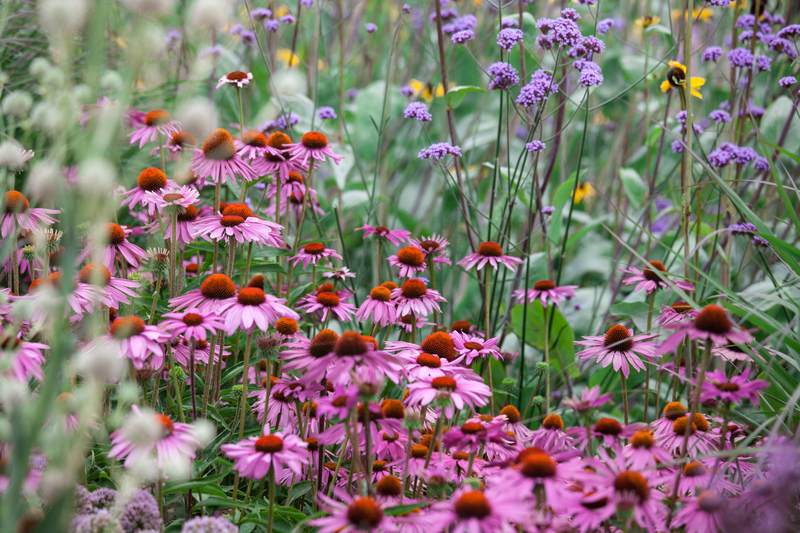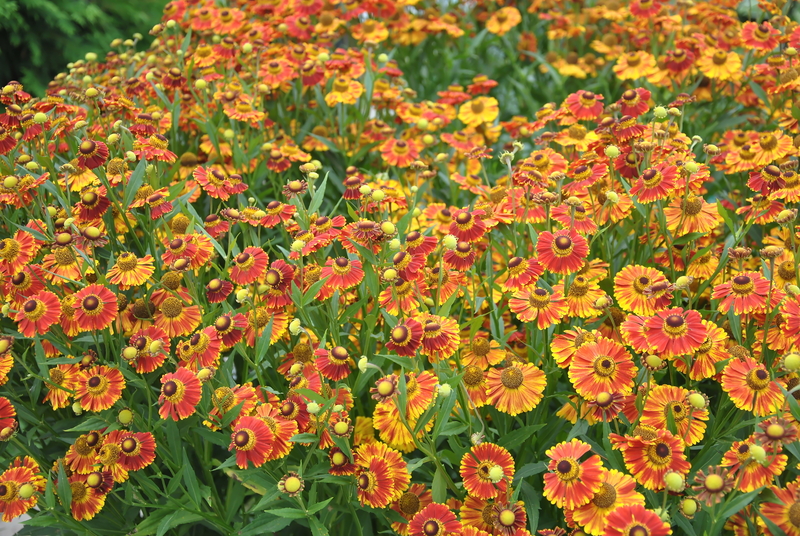Lush Gardens and Happy Tails Together
Posted on 05/06/2025
Lush Gardens and Happy Tails Together: Create a Pet-Friendly Oasis
Lush gardens and happy tails together - is it truly possible to balance thriving plant life with the playful energy of our beloved pets? For many garden enthusiasts, the dream of a green paradise clashes with the reality of playful pups, curious cats, and other furry friends running amok. But what if we told you it's not only possible to create a lush, vibrant garden and a pet-friendly backyard, but that your pets can actually benefit your garden and vice versa?
In this comprehensive guide, we explore how to design, build, and maintain your own backyard oasis--a sanctuary where both plants and pets flourish. Discover which plants are safe for animals, ingenious ways to keep your garden thriving, and how to ensure your pets and plants coexist in harmony. Let's dive in and cultivate happy tails and lush gardens together.

Understanding the Harmony Between Pets and Gardens
Can Pets and Lush Gardens Coexist?
Absolutely! The misconception that thriving gardens must remain off-limits to four-legged companions is outdated. By making smart choices in your plant selection, landscape design, and pet training, you can create a garden space where both flora and fauna live harmoniously. Lush gardens and pet-friendly backyards are not mutually exclusive. In fact, pets can help deter certain pests, aerate the soil, and provide endless joy and company in your garden haven.
Benefits of Combining Lush Gardens and Happy Pets
- Improved outdoor activity - Both pets and humans benefit from fresh air, sunshine, and exercise in green spaces.
- Natural pest control - Dogs and cats can help scare away rodents, birds, and some insects that might harm your plants.
- Enrichment for pets - Interactive spaces satisfy your pet's curiosity and provide ample mental stimulation.
- Eco-friendly living - A well-planned garden promotes biodiversity, supporting not only your pets but also pollinators and wildlife.
- Stress reduction - Being surrounded by nature and animals reduces stress and supports overall well-being for the whole family.
Designing Your Pet-Friendly, Lush Garden Sanctuary
Assess Your Garden and Your Pet's Needs
Start by evaluating both your outdoor space and the behavior of your pets. Does your dog like to dig? Is your cat an adventurer or a snoozer? Each pet's habits will influence your landscape choices. Consider these factors:
- Size of your garden
- Sunlight and shade areas
- Soil type and drainage
- Existing plants and trees
- Your pet's personality (active/quiet, digger/non-digger, chewer/non-chewer)
Choose Pet-Safe Plants for a Lush Pet Paradise
One of the most important considerations in cultivating lush gardens with happy pets is the selection of non-toxic, animal-safe plants. Many common garden plants are poisonous to pets. To maximize your garden's safety and vibrancy:
- Opt for non-toxic flowers and shrubs. Some great options include sunflowers, snapdragons, spider plants, calendula, and camellias.
- For ground cover, consider Irish moss or blue star creeper.
- For texture and shade, bamboo palm, boston fern, and areca palm are excellent choices that are also safe for pets.
- Herbs such as rosemary, basil, and parsley are safe and add both fragrance and utility to your garden.
Avoid plants like: lilies (highly toxic to cats), azaleas, oleander, foxglove, sago palm, and daffodils--these are dangerous to most pets.
Designing Pet Zones in Your Lush Garden
Creating dedicated pet zones in your lush backyard will not only keep your garden in epic shape, but will also give your pets a sense of excitement and ownership.
- Dog-friendly paths: Construct soft, gently winding paths bordered by raised beds. Use paw-friendly materials such as mulch, decomposed granite, or flagstone.
- Dig pits: If your dog loves to dig, designate a digging corner filled with sand, loam, and buried treasures (dog toys for extra fun!).
- Shady rest areas: Strategically plant trees or add pergolas and outdoor beds where pets can lounge away from the heat.
- Cat enclosures: Create safe outdoor "catios" or screened nooks where adventurous felines can nap, climb, and bird-watch without harming wildlife or getting lost.
- Water features: A pet-safe pond or bubbling fountain can double as a birdbath and a playful water source for your animals.
Maintenance Tips for Growing a Healthy, Pet-Friendly Garden
Safe Gardening Practices with Pets
Maintaining lush gardens and pet happiness together requires mindful care:
- Avoid chemical fertilizers, pesticides, and herbicides. Go for natural compost and integrated pest solutions like neem oil and diatomaceous earth.
- Mulch smartly: Cocoa mulch can be toxic to dogs; use shredded pine, cedar, or hemlock bark instead.
- Prune thick shrubbery to prevent hiding spots for ticks and fleas.
- Rinse pet paws after garden play, especially if you've recently fertilized or mulched beds.
- Regularly inspect plants for bites, nibbles, or signs of pet tampering and address it early.
Training Pets to Respect Your Plant Paradise
Teaching pets to respect your lush oasis is essential. Remember, positive reinforcement is more effective than punishment:
- Establish clear boundaries. Use edging, low fencing, or hedges to indicate "no-go" zones.
- Redirect digging and chewing. Whenever your pet targets a plant, redirect them to their own toys or digging area.
- Use scent repellents. Natural deterrents such as citrus peels, vinegar spray, or commercial pet repellents can protect prized plants.
- Supervise outdoor time especially during the early days of training.
*Patience and consistency are keys* to raising well-behaved garden companions.
Garden Projects to Enrich Your Pet's Experience
Give your furry friends an interactive, sensory-rich garden experience with creative touches:
- Create a sensory garden with safe herbs and plants like catnip, cat grass, mint, and lavender.
- Add agility features: Low tunnels, stepping stones, and small bridges for dogs to play and train.
- Bird feeders and pollinator plants add excitement for both pets and people--just keep them out of cat reach to protect local wildlife.
- Pet-safe edible gardens: Grow dog-friendly veggies like carrots, green beans, zucchini, and blueberries to share garden-to-bowl rewards.
Common Problems & How to Solve Them
Protecting Your Garden from Overzealous Pets
Even the best-trained pets will sometimes yield to instinct, resulting in trampled foliage, dug-up beds, or "watering" mishaps. Here are proven tips to keep your lush garden and happy tails together:
- Use raised beds or containers to protect delicate plants and vegetables.
- Install sturdy garden edging. Low fencing, trellises, or decorative stones can deter dogs from crossing.
- Rotate toys in the yard to keep them more entertaining than your flower beds.
- Designate potty zones for dogs and reward them for using them.
Dealing with Unwanted Wildlife and Pests
- Encourage beneficial insects and birds by planting pollinator-friendly species and providing water sources.
- Block off gaps or holes in fences to avoid stray animals or wildlife entering your garden.
- For flea & tick prevention, keep the grass trimmed, clean up leaf litter, and consider natural repellents such as cedar chips.
Pet and Plant Safety: Emergency Tips
What To Do If Your Pet Eats a Toxic Plant?
Despite all precautions, accidents can happen. If your pet nibbles a suspicious plant:
- Act fast: Remove any remaining plant material from their mouth.
- Identify the plant and call your veterinarian or a pet poison helpline immediately.
- Monitor for symptoms such as vomiting, lethargy, drooling, or diarrhea and seek emergency care if needed.
- Keep a list of emergency contacts and toxic plant references in your garden shed and kitchen.
Inspiration: Real-Life Examples of Thriving Pet-Friendly Gardens
Across the globe, pet owners and plant lovers alike have found amazing ways to celebrate lush gardens and happy pets together. Here are some stories to spark your creativity:
- The Urban Jungle Retreat: In London, a couple transformed their small urban yard into a multi-level garden with climbing vines and grass tunnels for their two cats. Raised beds and detachable fencing allow for easy plant and pet management.
- The Dog-Friendly Suburban Paradise: A family in California designed a yard with digging pits, a splash pond, and robust drought-tolerant greenery. Their dogs enjoy cool, shaded runs and sunken play pits, and the garden remains vibrant through every season.
- The Edible Garden for Pets and People: A chef in Texas planted dog-safe vegetables, blueberries, and an herb path for his golden retriever to sniff and snack on. With thick mulch and dog-proof borders, their lush garden supports healthy living for humans and pets alike.

Conclusion: Building Your Own Oasis of Green and Joy
Cultivating lush gardens and happy tails together is a true act of love and creativity. Through smart design, toxin-free plant choices, and thoughtful pet zones, you can enjoy a flourishing landscape that welcomes both blooming beauty and wagging tails. Whether you have a small city garden or a sprawling backyard, balance and harmony between your plants and pets are achievable--and immensely rewarding.
Your lush pet-friendly garden can become a sanctuary not just for your family and your animals, but also for pollinators and native wildlife. Embrace the journey, celebrate the little victories, and watch as tails wag and petals bloom in joyful unison.
Frequently Asked Questions: Lush Gardens and Happy Pets
-
Q: What are the safest popular plants for homes with dogs or cats?
A: Calathea, sunflowers, rosemary, spider plant, Boston fern, and bamboo palm are safe for pets. -
Q: How do I stop my dog from trampling my flowers?
A: Use clear garden paths, raised beds, and positive reinforcement to discourage trampling. -
Q: Can I have vegetable gardens and pets together?
A: Absolutely--pick dog-safe veggies, enclose beds, and supervise harvest times. -
Q: Is cocoa mulch safe for pets?
A: No, cocoa mulch is toxic to dogs and should be replaced with pet-safe alternatives.
In closing, Lush Gardens and Happy Tails Together isn't just a possibility--it's a lifestyle waiting to bloom in your own backyard. Start today, and watch the green and joyful transformation unfold!

